Y-12 Blog
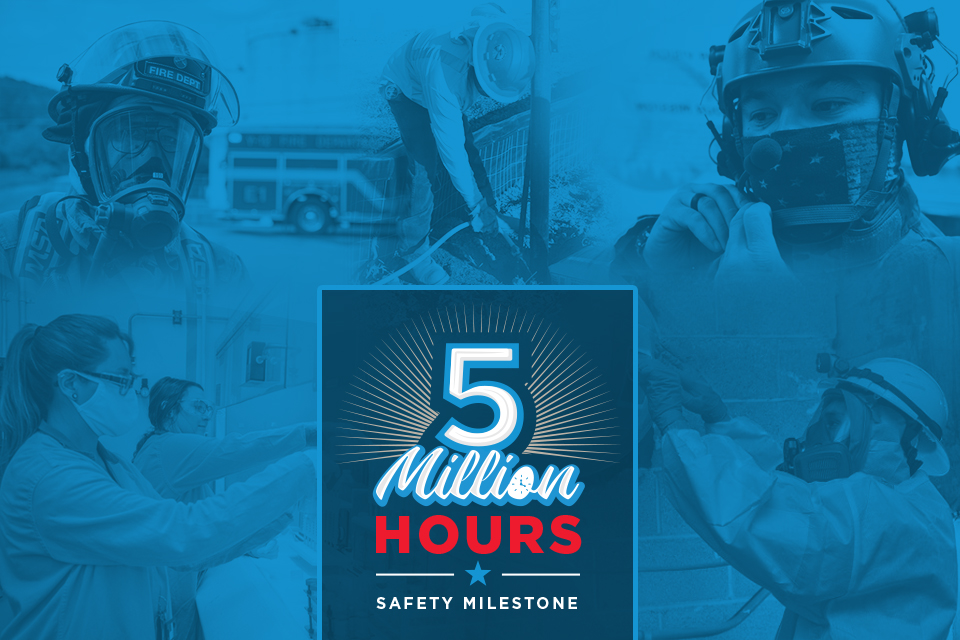
Five million hours. That’s a difficult-to-conceive amount of time. To put it in perspective, you would have to drive back and forth between Amarillo, Texas, and Oak Ridge, Tennessee more than 150,000 times to hit five million hours. Better pack some snacks for the road!
Consolidated Nuclear Security employees achieved the major safety performance milestone of five million hours without a lost-time injury earlier this year, capping off a streak that lasted nearly four months. This includes the performance of CNS workers and the subcontractors for which CNS directs day-to-day activities.
The last time CNS achieved five million hours was in April 2017. According to Environment, Safety, and Health senior directors Jimmy Rogers of Pantex and Jan West of Y-12, the recent accomplishment illustrates the sites’ latest safety strategies and dedication to ensuring workers return to their families safe.
“We’ve taken a boots-on-the-ground approach when it comes to strengthening our safety culture at both sites,” said Rogers. “Our workforce prides itself on keeping one another safe, so we decided to get our organizations across the enterprise directly involved.”
Organizations are capitalizing on the strategies that are working specifically for them through new safety sustainment plans, building on strong safety improvement numbers in 2021. Leadership across the enterprise is supporting efforts to sustain the actions and engrain them into the safety culture. Various incentives to support safety culture have been created, such as the Good Catch Award. Union leadership and safety representatives have also been key in driving improvements.
West shared that all personnel should be proud of this accomplishment, not just ES&H. Reducing lost-time injuries is good for the overall health of the organization, as well as builds confidence in personnel’s families that the safety of their loved ones is a top priority.
“The landscapes at Pantex and Y-12 are changing daily, and so it’s even more exciting to have this safety performance amidst all of the project work. Our workforce takes pride in having a safe environment,” West said. “Our organizations and workforce look out for each other. It takes raising your hand when something doesn’t look right. It’s not just lip service; it’s how we do business here.”
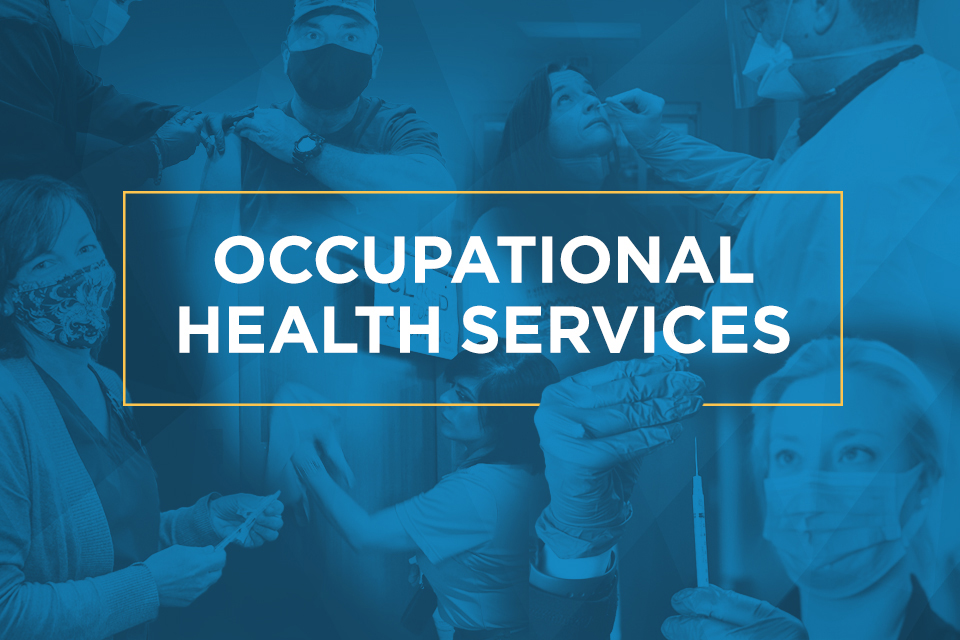
Pantex and Y-12 Occupational Health Services received top scores in all applicable categories in a recent Survey Report conducted by the Accreditation Association for Ambulatory Health Care (AAAHC) and, as a result, both sites were awarded a full three year accreditation. The healthcare accrediting body performs inspections of more than 6,000 healthcare facilities around the country.
The Survey Report found Y-12’s OHS to be “fully compliant” in all areas reviewed in 2022. “I’m not sure we’ve ever done that in any of our surveys,” said Dr. Warren Sayre, CNS corporate medical director and Y-12 site occupational medical director. “And to do so during the [COVID-19] Omicron surge is amazing.”
The “fully compliant” standard was adopted by AAAHC six years ago. Prior to that, “substantially compliant” was the highest rating available.
Pantex also received full accreditation after they “aced” the Survey Report conducted at Pantex about a year ago. “There were 11 chapters with multiple inspection items in each,” said Don Morris, who led the Pantex effort. “Our outstanding rating reflects the fact that we exceeded national level criteria, placing us within the top outpatient clinics in the U.S.,” Morris added.
The Survey Report is used in conjunction with the Accreditation Handbook for Ambulatory Health Care, v41, and is conducted every three years. It reflects an evaluation of an organization’s compliance with the standards stated in the handbook.
AAAHC is considered the “gold standard” for accreditation in ambulatory health care, requiring a continuous cycle of execution, self assessment, and process improvement.
The Survey Report evaluates all aspects of care including quality of health care, infection prevention and control, patient safety, behavioral health, and clinical record keeping, to name a few. Dr. Sayre praised the entire OHS teams at both sites for their achievement, but took a moment to single out Y-12’s Stan Roberts.
“His diligence and relentless effort was a major driver in achieving this milestone,” said Dr. Sayre.
Gary Hall, director of Occupational Health Services, echoed Sayre’s appreciation for the accomplishment in the midst of a pandemic and also praised Roberts, describing him as “one righteous dude.”
“Stan is a longitudinal thinker, developing and guiding the best practices we follow to ensure our fellow employees receive the quality care they deserve. Stan is passionate about serving Y-12ers,” he said.
Roberts has nearly 40 years of experience at Y-12 and OHS. A physician assistant, he serves as the OHS clinical operations coordinator. Not surprisingly, Roberts pointed to the hard work of others.
“I so appreciate the sustained effort the OHS team made over the past three years and the surge effort over the final two to three months to keep OHS compliant with the many AAAHC standards. To have done this — despite the pandemic — makes all of the team’s dedication and focus even more remarkable,” Roberts said.
Pantex site manager Jeff Yarbrough said Pantex OHS success can be traced back to a great team effort with Don Morris leading the effort:
“Don Morris and the team at Pantex OHS have kept us safe despite the pandemic. Don should be commended for his experienced guidance during this difficult time. His leadership is a large part of our outstanding accreditation scores.”
Bottom line: Pantex and Y-12 OHS are top tier occupational healthcare organizations, which, even during a pandemic, performed to the industry’s highest standards.
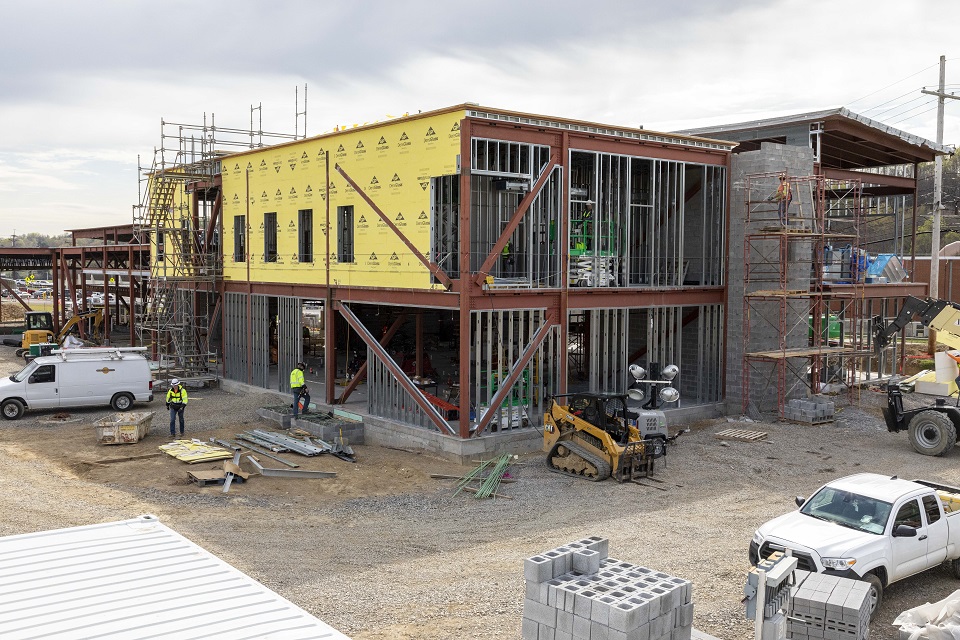
This construction site (photo from April 2022) will one day house the Y-12 Fire Department, replacing a facility that was built in the 1940s.
There is a lot of progress taking place at the construction site that will soon house the Y-12 Fire Department. Steelworkers placed the last piece of major structural steel on the new fire station, marking a major milestone in the project by achieving “topping out.”
“The ‘topping out’ is another symbolic milestone in construction,” said Jim Blair, CNS project manager. It reinforces that progress is being made toward a new operating facility that will house emergency response personnel, which is long overdue.”
“Concrete slabs have been placed and masonry walls have gone up, along with roofing,” Blair said. “Electrical and mechanical rough ins and wall framing are also going up.”
Y-12 Fire Chief Scott Vowell is excited about the pace of the project.
“With just a little imagination, you can envision what the fire station will be like. You can see where the fire-station designed rooms will be set up to maintain our emergency medical supplies, the hazardous materials suites and equipment, and the decontamination area and living quarters, just to name a few,” said Vowell.
The new fire station is replacing a facility that was built in the 1940s. The building does not meet the needs of a modern fire department and has deteriorated over time, requiring several areas to be cordoned off because of safety concerns.
Vowell said the new facility represents more than just a location move. It’s also about moving to an improved day-to-day lifestyle and attitude.
“To move from one of the original buildings to a state of the art, fire designed building, will have a lasting effect on our firefighters,” Vowell said.
The fire station is expected to be operational in early 2023.
It, along with the new Emergency Operations Center that is taking shape a few blocks west on First Street, are both NNSA pilot projects designed to streamline efficiency and delivery of specific construction projects under $50 million by adopting more cost effective commercial building practices where possible.
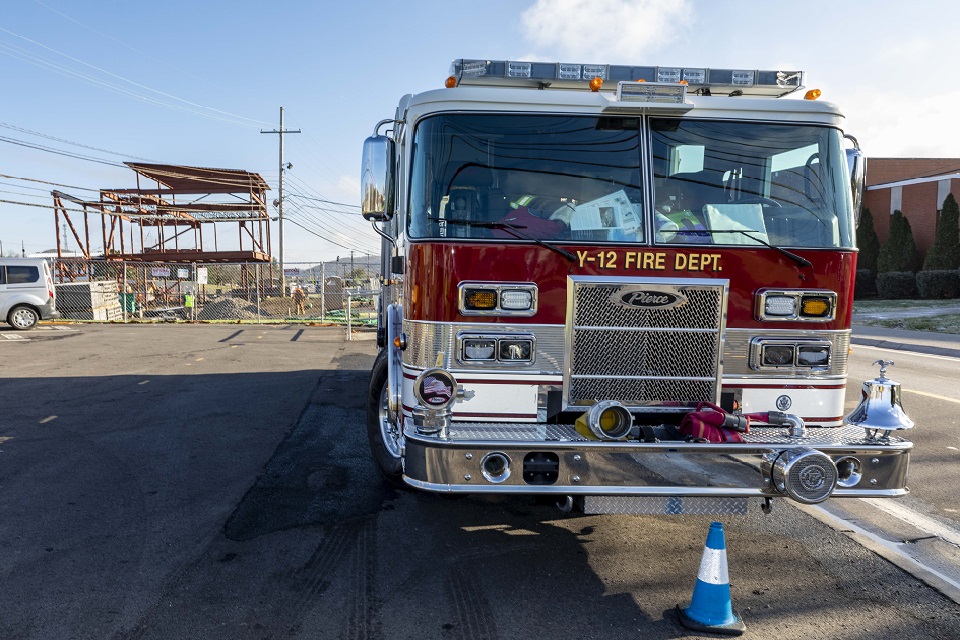
A Y-12 fire truck sits near its soon to be home.
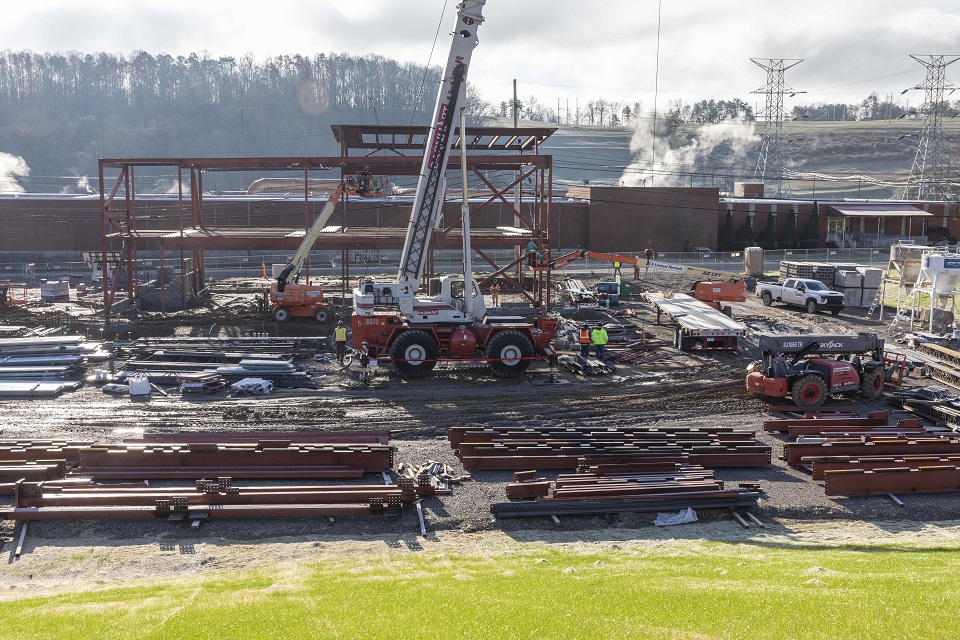
Fire station construction, February 2022
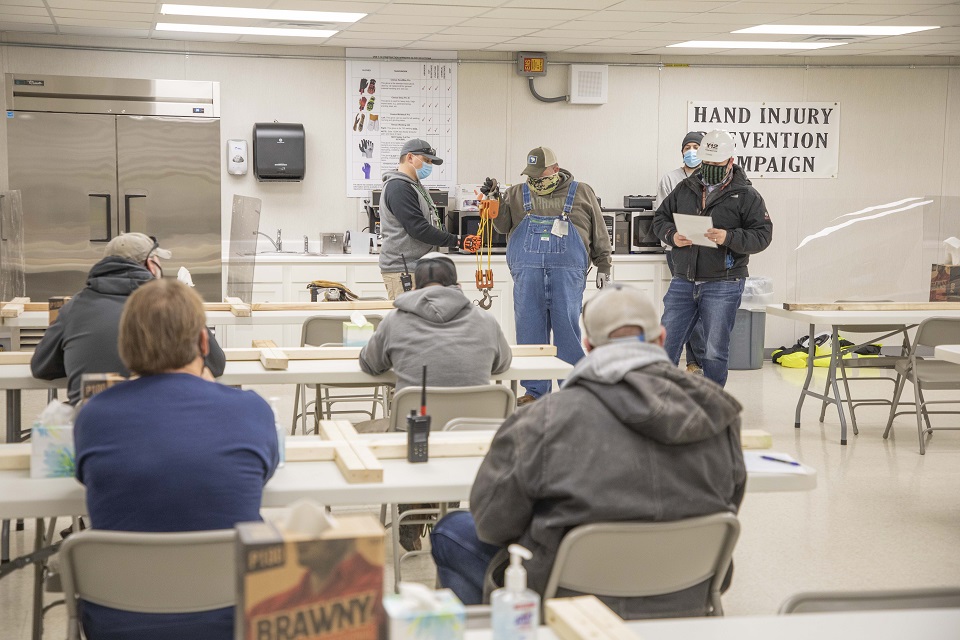
Workers watch an incident reenactment at Y-12 Construction as part of a recent Hand Injury Prevention Campaign.
While many tools can be carried in a construction worker’s tool belt, none are more important than the ones that fasten it.
“The primary tools craftsmen use to perform the work are their hands,” said Jeremy Spears, senior safety specialist. “It’s important to protect them.”
Recently, Construction and Operations personnel developed, sponsored, and conducted a Hand Injury Prevention Campaign. The focus was to protect worker’s hands and reduce hand injuries. The campaign was an organization wide effort for both groups.
“The campaign provided four weeks of concentrated information focused on a single topic,” said Y-12 Construction Manager Ryan Atwell.
While the campaign was a joint effort, each organization had specific activities to communicate hand safety to its employees.
Construction used weekly “Toolbox Talks.” Topics ranged from pinch points (areas of the hand prone to be pinned between stationary and moving objects) to power-tool safety guidelines. The talks were held during work briefings and weekly safety meetings.
Another highlight of Construction’s activities was the Reenactment Roadshow, which presented hand injury scenarios based on actual incidents. Seven reenactments were followed by question and answer segments. About 300 construction workers attended the in person sessions.
“This was a great opportunity to have an actual hands on re creation,” Spears said.
Each organization created a glove poster, with assistance from Safety and Industrial Hygiene and Communications, for the campaign. The posters had examples of work gloves specific to the organization’s needs, their intended use, and protection offered. Posters are displayed in shops and tool cribs.
“When we first started, there were just leather gloves,” said facilitator Linda Fiore. “Thankfully, we’ve expanded that. Now you have vibration gloves, gloves for electricians, and so much more. Showing the craft this poster was an important step. They can look at it and think, ‘I’m doing this type of work, so I need this type of glove.’”
Spears added, “According to Bureau of Labor Statistics, 70% of workers who experienced a hand injury were not wearing any gloves, and 30% were wearing damaged or incorrect gloves. The poster will close the knowledge gap when it comes to gloves.”
Surveys administered before and after the campaign were also key to its success. The responses provided important feedback and perspective. Pre campaign responses were generally positive about how CNS communicated hand injuries through lessons learned, glove knowledge, and supervisory support of hand injury prevention, which is valuable.
Management’s presence in the field increased more than 50% during the campaign.
“This allowed for observations in a lot of areas,” Fiore said. “They could see if the employees were wearing gloves or wearing the right gloves, and make the correction in the field.”
After the campaign, 99% of survey participants were more conscious of hand injury situations, while 98% of participants felt more educated about general hand safety.
“I’m very pleased about the campaign’s success, and I’m confident that our organization is better informed and mindful of how to prevent hand injury.” Atwell said.
Here are 10 basic tips to protect hands while using power tools:
- Keep tools in good working condition with regular maintenance.
- Use the right tool for the job.
- Examine tools for damage before use.
- Operate according to manufacturer’s instructions.
- Use the proper protective equipment.
- Disconnect tools when not in use, before servicing, and when changing accessories, such as blades, bits, and cutters.
- Secure work with a clamp or vise, freeing hands to operate tools.
- Avoid accidental starting. Fingers should not be placed near the on-switch button when carrying a power tool.
- Wear proper apparel. Loose clothing and jewelry can become caught in moving parts.
- Keep a safe distance away from work area if just observing.
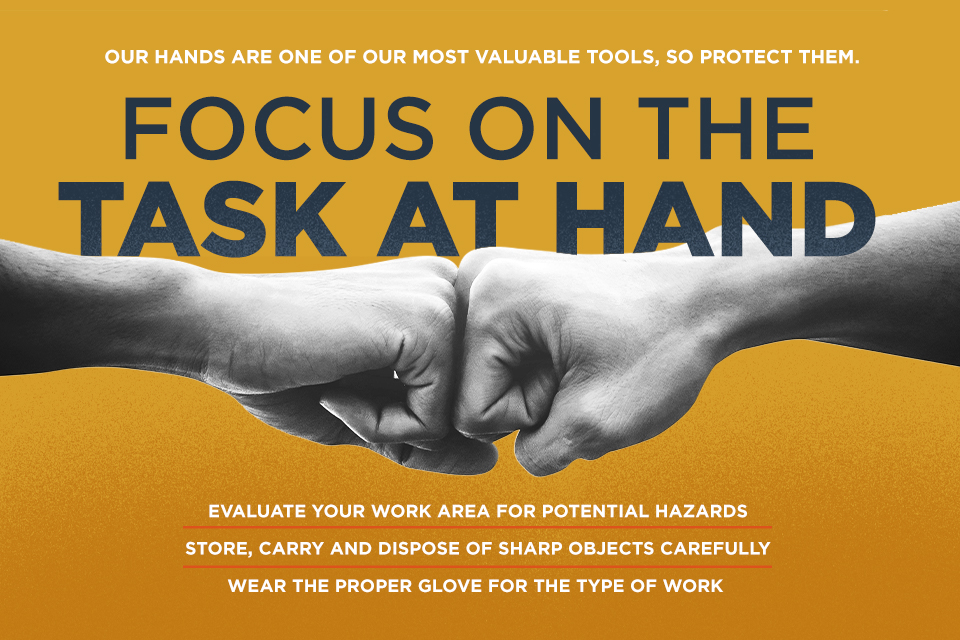
This poster was part of the Hand Injury Prevention Campaign.
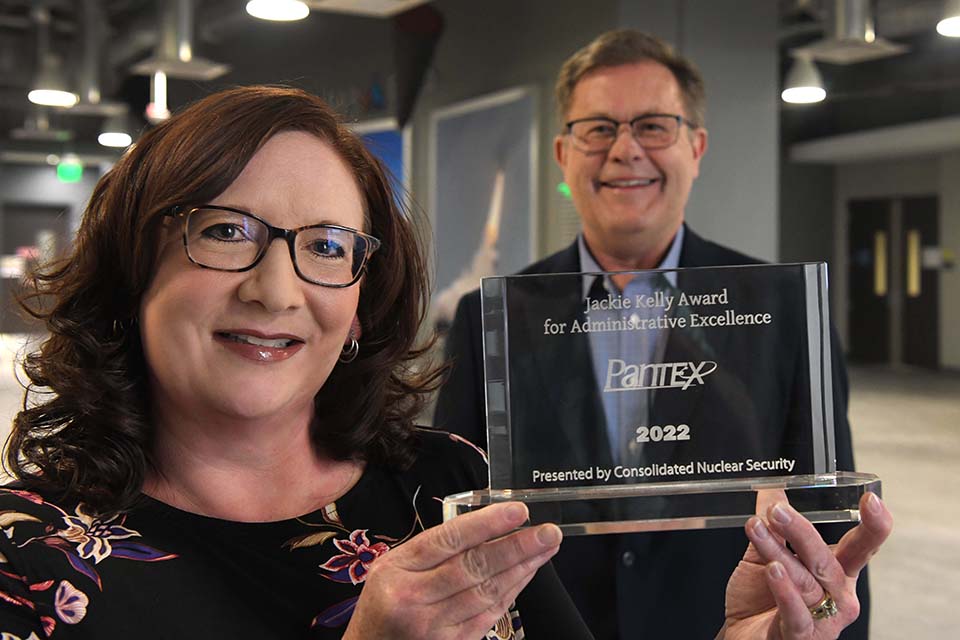
Administrative professional Renea Dosher won the Pantex Jackie Kelly Award for 2022. With her is Deputy Chief Information Officer Rick Day, who co-nominated her with Chief Information Officer Joe Harris.
For most organizations, the group’s administrative professional is both a nexus of knowledge and the glue that holds all the parts together. They keep coworkers and their bosses on track, informed, reminded, and supported. These professionals do their complex jobs while dealing with deadlines, interruptions, and — over the past two years — all the challenges presented by the pandemic.
Nearly 100 administrative professionals work at Pantex and Y-12, helping to keep the sites’ missions running smoothly. One such stellar administrative professional was Jackie Kelly, who was known at Y-12 for meeting challenges, including the cancer that eventually ended her life. In 2017, the Jackie Kelly Award was established in her memory to recognize one outstanding administrative professional at each site.
A panel of five judges from both sites scored the nomination forms with the names and organizations redacted to ensure fairness.
The 2022 Jackie Kelly Award winners are Renea Dosher at Pantex and Melanie Fleury at Y-12.
Renea Dosher, Pantex
Dosher, senior administrative support for Information Solutions and Services, has worked at Pantex for more than six years. She said going the extra mile and striving for excellence are the keys to success.
“This role is about providing dedicated support with the best results,” she said. “It’s important to uphold accountability, professionalism, and accuracy in all tasks. The end result is not only a reflection of me, but the IS&S organization, CNS, and our mission.”
She was nominated by Chief Information Officer Joe Harris and Deputy Chief Information Officer Rick Day, noting her reputation for delivering high quality products.
“Renea has strong interpersonal skills and works equally well with technical employees and all levels of management. Her role requires that she interact with a wide mix of employees all day, every day,” they wrote in nominating Dosher.
“Renea is the ‘go to’ person for a wide range of business operation needs and will find the answers if she does not already know them,” the nomination continued. “She is a committed team player who frequently works extended hours to support deliverables and her fellow teammates.”
Dosher said the rewards of her job come from her coworkers.
“I am proud to work with some of the best people,” she said. “Their motivation, support, mentorship, and encouragement to seek out new challenges is rewarding. There is always an opportunity to learn and grow.”
Melanie Fleury, Y-12
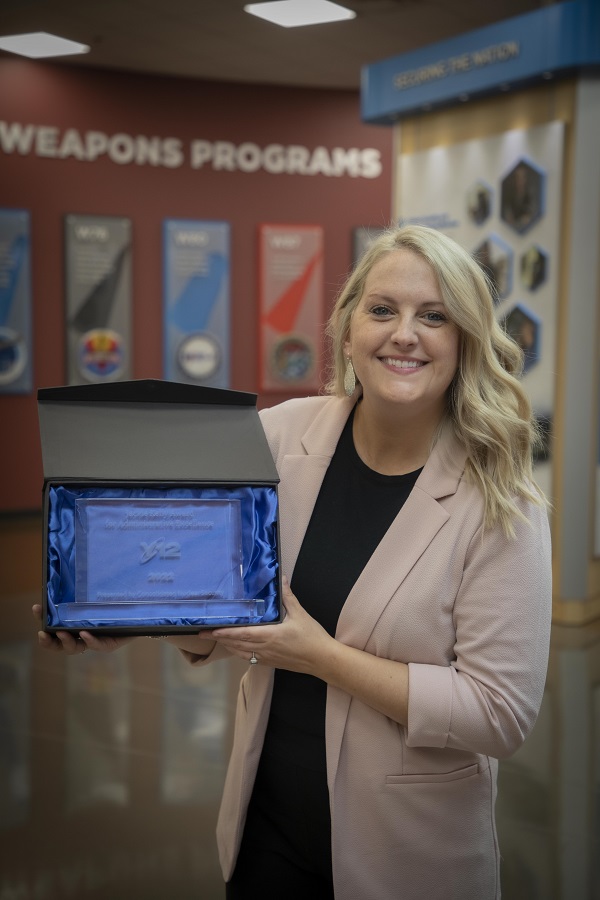
Jackie Kelly Award winner for Y-12 Melanie Fleury poses with her plaque.
Fleury, administrative support for Mission Systems & Integration, chose to leave the workforce for eight years to care for her special-needs son. Hearing of a job posting in administrative support led to her joining Y-12.
Now, just six months later, Fleury is the Jackie Kelly Award winner at Y-12. The director she works for, Will Farmer, said in her nomination that, “Ms. Melanie displays a caring attitude by doing the small things that make a person feel confident in their own success.”
“She has become a vital part of our Mission Systems & Integration family,” Farmer wrote. “With her dedication, conscientiousness, caring, and can do attitude, Ms. Melanie has made a huge positive impact to our team. We’re truly fortunate to have her.”
Fleury said she’s the one who feels fortunate to have been blessed with the position.
My team are the most comradery minded and hard working individuals. They’ve embraced me immediately, taught me the ropes, and encouraged me along the way,” she said. “The atmosphere of Mission Systems & Integration encompasses my core values of integrity, excellence, teamwork, so it has been effortless for me to buy in to our mission.
“Things I always try to provide my team with is my time and attention. I want them to feel valued, welcomed, and appreciated. I want them to know I am happy to assist and eager to help. Everyone is important to me, no matter their title, because they are important to me as a person,” she said.
Congratulations to Renea Dosher and Melanie Fleury, who represent the legacy of Jackie Kelly.
